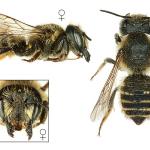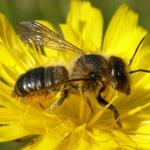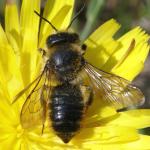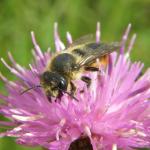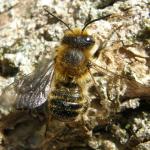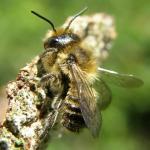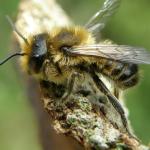Megachile rufiventris SCHENCK; Megachile octosignata SCHENCK; Megachile distincta PÉREZ 1897; Megachile pilicruriformis COCKERELL 1928;
An identification key is available (Else, 1999). Females from the British mainland have the scopal hairs on sterna 5-6 black. Those from the Isle of Man and from Ireland have them extensively golden red, although the black form has been seen in Ireland too (D B Baker, pers. comm.).
Recorded from southern England northwards to the coast of south-west Scotland. The majority of records are from south-east England along the south coast and up to Bristol. Also recorded from Ireland but apparently absent from the Channel Islands.
Distributed throughout much of western and central Europe, Lithuania and Finland.
This species is not regarded as being scarce or threatened.
Found in a variety of habitats from heathland to brownfield sites and formal gardens to ruderal verge habitats.
This species in on the wing from June through to September with a large proportion of records in July.
Tree trunks, dead plant stems (including bramble), and roofing timbers are all noted as providing suitable locations for nests (Else, 1999).
Bird’s-foot-trefoil, thistles and bramble are noted as being visited by this species.
Coelioxys inermis (Kirby) has been recorded as a cleptoparasite. The pteromalid wasp
Pteromalus apum (Retzius) has been reared from this species (G R Else, pers comm.).
2012


